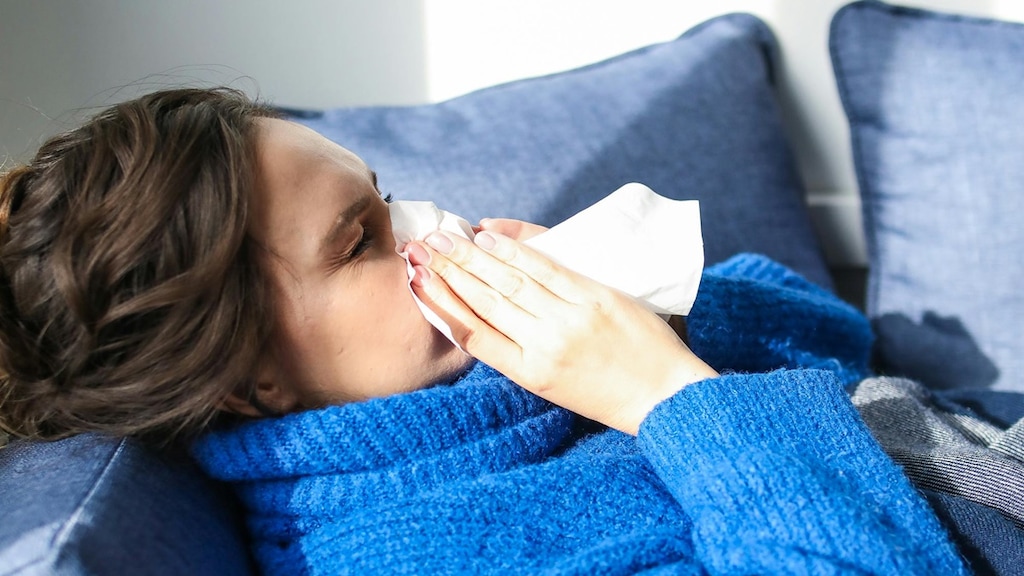By Dr. Rajib Dasgupta
Two cases of Human Metapneumovirus (HMPV) in India were notified on 06 January, a 3-month-old female infant and an 8-month-old male infant. The two cases were detected in Bengaluru, a marker of the routine surveillance system functioning well at the hospital level.
This is a season of ‘tripledemics’ – seasonal Influenza, Respiratory Syncytial Virus (RSV) responsible for the common cold and the HMPV. All three lead to respiratory illnesses with similar and overlapping symptoms. HMPV and RSV belong to the same family of viruses. Like most other respiratory infections HMPV spreads through direct contact with a ‘case’ or from touching objects contaminated with the virus. The routes of transmission are therefore coughing, sneezing, shaking hands, close physical contact and touching surfaces or objects (referred to as fomites) such as phones, door handles, keyboards, or toys.
Preventive measures include basic hygienic measures such as washing hands often with soap and water or an alcohol-based hand sanitiser, cover nose and mouth with elbows (not bare hand) while coughing or sneezing and avoiding touching face, eyes, nose, and mouth. Those with symptoms of respiratory illnesses should stay at home and employers should be sensitive to the public health benefits of this. Those with illnesses should wear masks when in company of other people.
HMPV is often a mild respiratory illness marked by runny nose and sore throat. It is also conspicuous for causing both upper and lower respiratory tract infections (RTIs) and therefore cough and wheeze too. The first infection accords some immunity and subsequent infections therefore tend to be milder. First time infections are often severe at extremes of age – very young children and adults over 65 years as well as those with breathing problems or a weakened immune system. The most common diagnostic test for HMPV is a reverse transcriptase-polymerase chain reaction (RT-PCR) and is relatively easily available. Routine testing is very low though.
Symptoms are more severe when the lower respiratory tract is infected and include bronchiolitis, bronchitis, pneumonia, asthma, flare-ups in those with chronic lung disease and infections of the ear. There are no specific antivirals for HMPV and most infections heal by themselves. Antibiotics may be necessary only if there are secondary bacterial infections and should certainly be taken under medical supervision. Hospitalisation is necessary for those with severe symptoms and are generally well managed with intravenous fluids, oxygen, and corticosteroids. Mortality with HMPV is known to be associated with other underlying conditions such as those with cancers or transplants and with co-infections including COVID-19 and severe influenza.
The country is already geared for integrated surveillance of respiratory pathogens presenting as cases of influenza like illness (ILI) and severe acute respiratory illness (SARI). The monitoring of ILI/SARI needs intensification and monitoring by the district and state surveillance units of Integrated Disease Surveillance Project (IDSP) especially for young children, elderly, and those with serious comorbidities. The ILI/SARI surveillance data from reporting units need real-time monitoring. While most state-run secondary and tertiary hospitals are part of the network more private institutions need to be included. The Indian Council of Medical Research (ICMR) renders diagnostic support through its network of Virus Research and Diagnostic Laboratories.
Is the HMPV a new virus? The answer is no. it was first isolated in the Netherlands in 2001. In countries that perform proportionately more laboratory tests, HMPV is known to be the second most common cause after RSV of acute respiratory tract illness in otherwise-healthy children. Data till the last week of December reported by the Chinese Center for Disease Control and Prevention (China CDC) indicate that multiple flu-like illnesses are on the rise; this is not at all uncommon in temperate zones in this season. As per usual trends, influenza is the leading cause with 30.2 percent of those tested for ILI/SARI including 17.7 percent of those hospitalised. HMPV accounts for 6.2 percent of those tested including 5.4 percent of hospitalisations. are ahead of other flu-like diseases, followed by COVID-19, rhinovirus and adenovirus.
While routine testing for HMPV is not really a norm in India, retrospective studies indicate that it is a common respiratory pathogen; its prevalence varies from 1 to 19% in different regions of the country. While it is predominantly a disease of younger children in temperate climates, the Indian data available so far indicates that 44% cases were among the 15-50 years age group. The common symptoms included cough, running nose, chills, and muscle pain and to a lesser extent vomiting, neck stiffness, breathlessness, and diarrhoea. Co-infection of HMPV has also been founds with several infections such as Influenza, RSV, Dengue, Leptospira and Scrub Typhus – some of these co0infections can be potentially complicating.
With wider testing, India may be detecting more cases since it is a prevalent infection. A more responsive primary level care and quality hospital management shall ensure that there are no causes for alarm.
(The author is Professor and Chairperson, Centre of Social Medicine and Community Health, Jawaharlal Nehru University, New Delhi. Disclaimer: Views expressed are personal and do not reflect the official position or policy of the FinancialExpress.com.)

